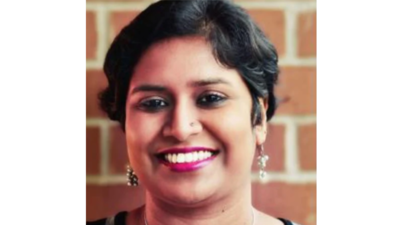
‘Kerala’s adult movie industry broke norms by highlighting female desire’
In ‘Rated A: Soft-Porn Cinema and Mediations of Desire in India’, Darshana Sreedhar Mini studies Kerala’s once-bustling adult film industry. The assistant professor of film at the University of Wisconsin-Madison talks to Ketaki Desai about the labour behind this mini-industry and starlets like Shakeela who powered it
■ What inspired you to study the soft porn boom of ’90s and 2000s Kerala?
While doing my MPhil, I was trying to understand how young boys or teens get to know about sex education. After much coaxing, they said they learnt about sexuality and intimacy (what a condom was, for instance) through soft porn films. That made me think about the genre, but there wasn’t much scholarship about it then. Everyone told me these movies were made in Kodambakkam, Chennai. So, I went there, to the streets everyone told me existed, but no one was there. That’s when I learnt about Kodambakkam’s fictitious, pseudonym-driven production culture that capitalised on the reserve pool of mainstream cinema. They were tapping into people waiting for a break that never came. I started spending time at film labs and, after five months of waiting, I was finally introduced to someone who worked in soft porn.
■ What led to its swift rise and fall?
Soft porn became a parallel industry in the 1990s and early 2000s primarily owing to the financial crisis mainstream cinema faced. Many films made by prominent directors, featuring A-list actors, failed miserably at the box office. Exhibitors and distributors were trying to figure out what would work, and the quickly produced, low-budget formula of soft porn made it viable. However, oversaturation led to its decline — films with similar storylines, the same cast and crew with maybe 10 or 15 women who acted in all these films. Shakeela, for instance, began to charge per day rather than per film at one point. She got Rs 1.5 lakh a day, but what she didn’t know was that one day’s footage was being used for multiple films.
■ Shakeela became synonymous with the industry. How did it impact her life?
Soft porn did become equivalent to Shakeela, but its fallout was that she never got to play a real character in Malayalam cinema. She tried directing a film, but everyone wanted to see her as the actress. Interestingly, for someone seen as the fantasy of heterosexual men, Shakeela was closely associated with the trans community and its causes. Now that she is gearing up for politics, I’m curious to know how she navigates the expectation of respectability.
■ How much control did starlets working on these projects have?
They didn’t have much control over what ended up at the editing table. They shared quasi-family relationships with directors and technicians, so it wasn’t direct exploitation. Some told me it was a way to get a foothold in the mainstream industry and make connections with directors. But once you’re a part of soft porn, your chances in the mainstream went down.
■ Were women able to watch these films?
Most cinema halls I went to in Kerala weren’t willing to have women in the audience, unless they were sex workers. But I spoke with many women who watched these films on cable television late at night. The female lead appeals to people because she’s sexually autonomous and doesn’t care about middle-class morality. Funnily, the men who acted in soft porn were more embarrassed to speak with me as their work was seen as demasculinising. The strong female lead was the fulcrum of the narrative. She needs to have sex, and sometimes there are references to it not being fulfilling. The men take that personally, feeling like they were just an extra in a Shakeela film, rather than an actor.
■ These films portrayed unexplored forms of desire such as female orgasms and masturbation. Was it deliberate?
Female sexual pleasure is a big no-no in mainstream filmic depiction. Women as agents of pleasure was something impossible to imagine in dominant media. When I asked directors why they wanted to show female pleasure, they said they wanted to change the dynamics, where instead of a hero dictating things, it’s a woman. The female lead then stands in for the man and is allowed those desires.
.png)
 German (DE)
German (DE)  English (US)
English (US)  Spanish (ES)
Spanish (ES)  French (FR)
French (FR)  Hindi (IN)
Hindi (IN)  Italian (IT)
Italian (IT)  Russian (RU)
Russian (RU)  4 hours ago
2
4 hours ago
2









Comments